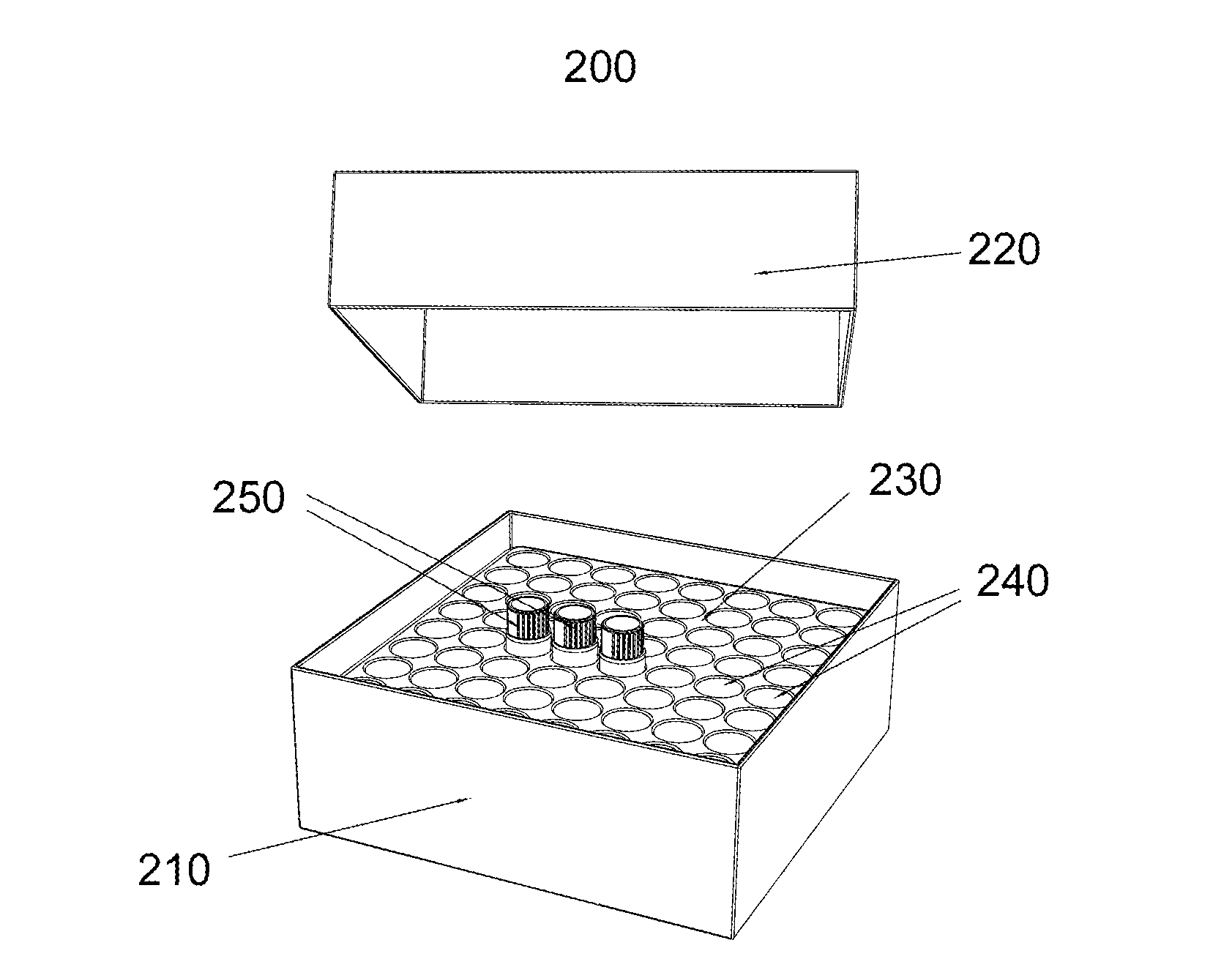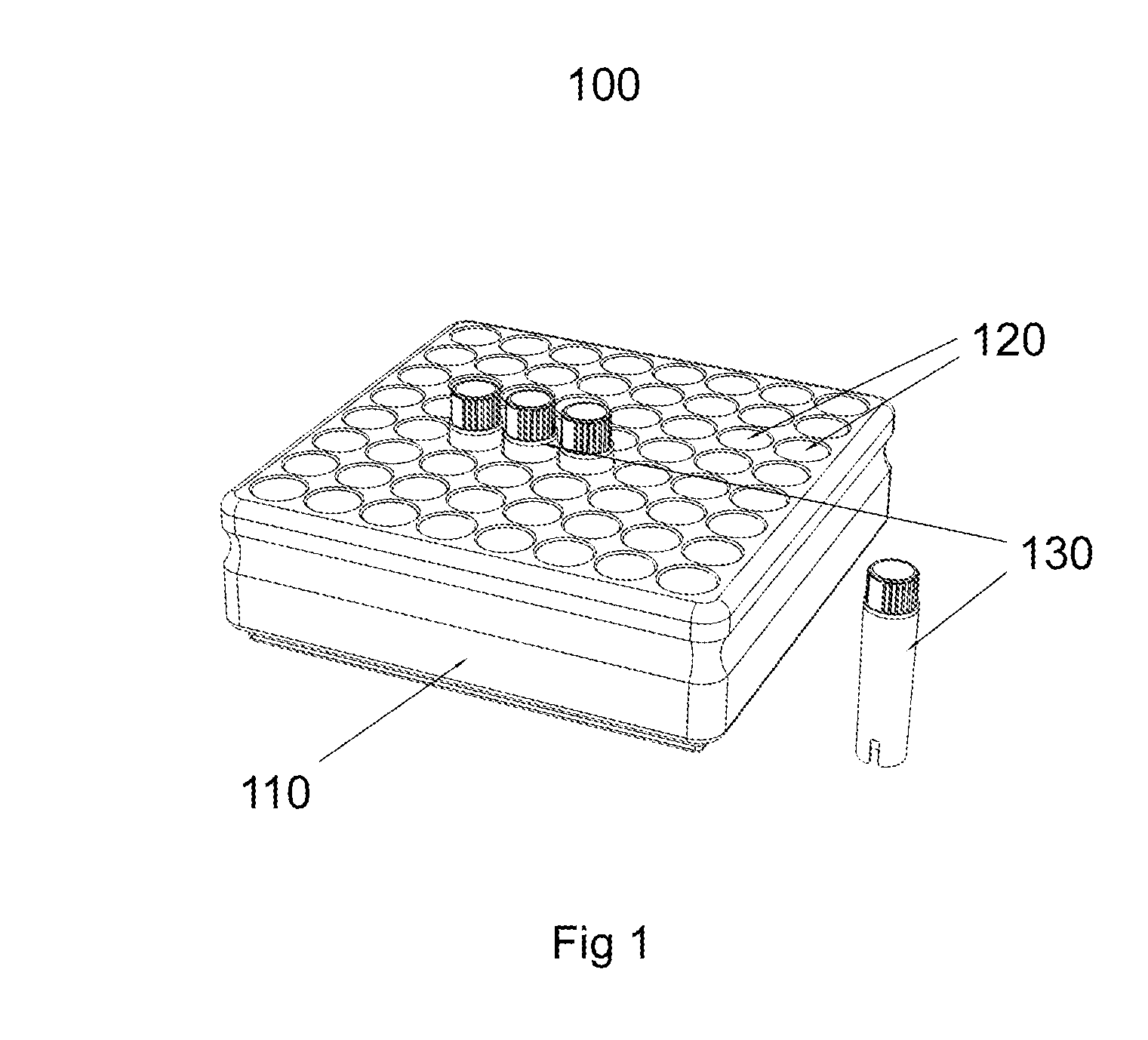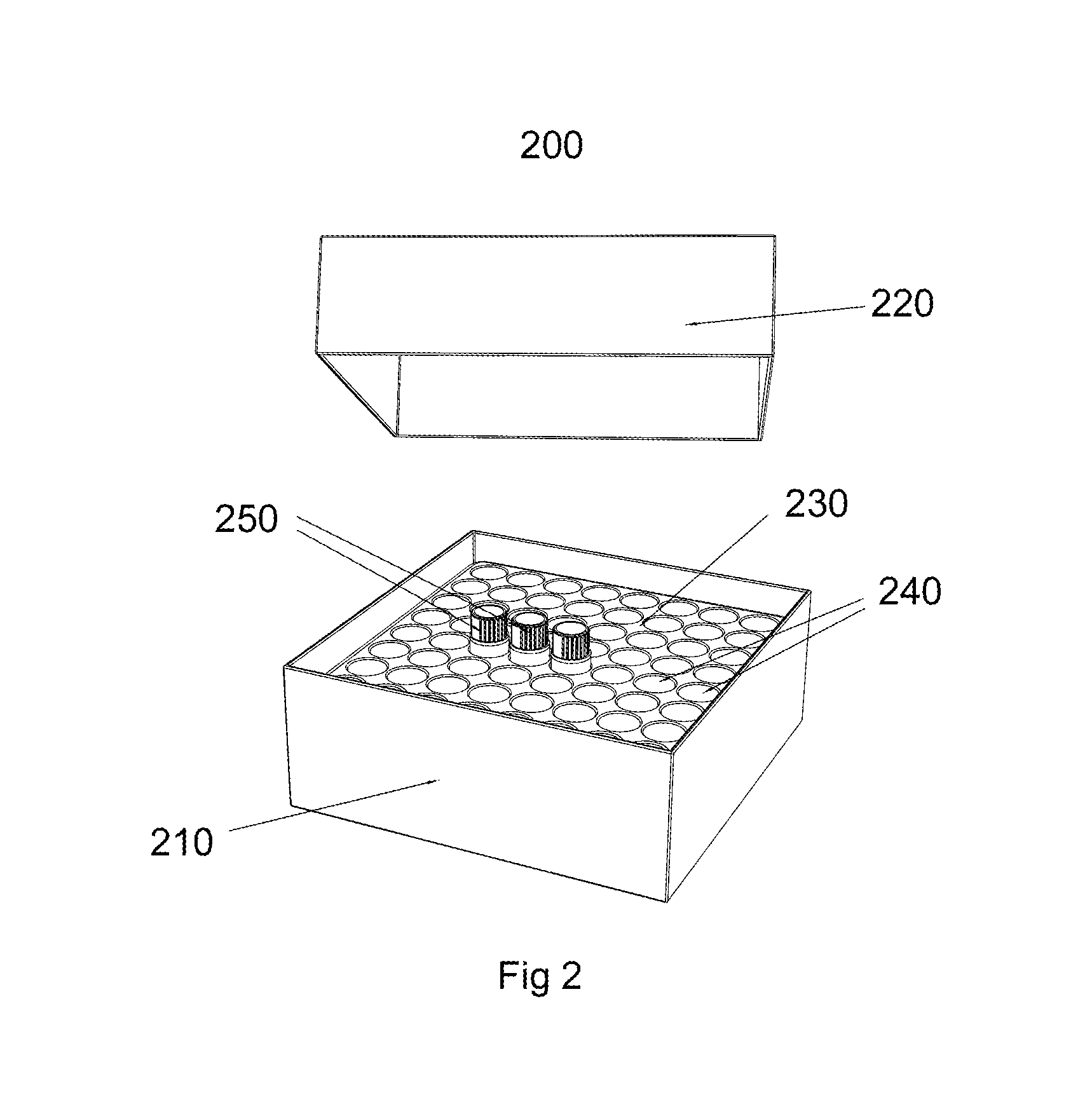Preventing sample degradation from transient temperature fluctuations
a technology of transient temperature fluctuations and sample degradation, which is applied in the field of preventing sample degradation from transient temperature fluctuations, can solve the problems of protein denaturation and aggregation, numerous opportunities for temperature cycle-dependent degradation, undesired effects, etc., and achieves the effect of suppressing (minimizing) the fluctuations in the chilled sample, effective thermal stabilization, and effective solutions
- Summary
- Abstract
- Description
- Claims
- Application Information
AI Technical Summary
Benefits of technology
Problems solved by technology
Method used
Image
Examples
Embodiment Construction
[0024]Embodiments of the present invention will be best understood by reference to the drawings, wherein like reference numbers indicate identical or functionally similar elements. It will be readily understood that the components of the present invention, as generally described and illustrated in the figures herein, could be arranged and designed in a wide variety of different configurations. Thus, the following more detailed description, as represented in the figures, is not intended to limit the scope of the invention as claimed, but is merely representative of presently preferred embodiments of the invention.
[0025]An embodiment of a container holder of the invention that is useful in the methods of the invention is shown in FIG. 1. In this embodiment, the container holder is a sample rack 110 constructed from a thermoconductive material having a thermal conductivity of approximately 170 watts per meter.degree Kelvin and a density of 2.7 grams per cubic centimeter, as can be fabr...
PUM
 Login to View More
Login to View More Abstract
Description
Claims
Application Information
 Login to View More
Login to View More - R&D
- Intellectual Property
- Life Sciences
- Materials
- Tech Scout
- Unparalleled Data Quality
- Higher Quality Content
- 60% Fewer Hallucinations
Browse by: Latest US Patents, China's latest patents, Technical Efficacy Thesaurus, Application Domain, Technology Topic, Popular Technical Reports.
© 2025 PatSnap. All rights reserved.Legal|Privacy policy|Modern Slavery Act Transparency Statement|Sitemap|About US| Contact US: help@patsnap.com



